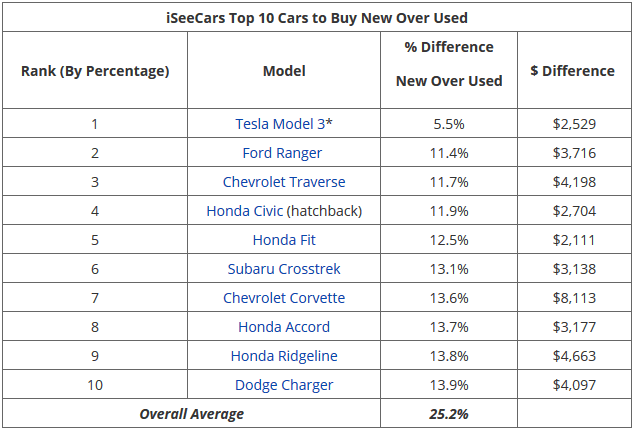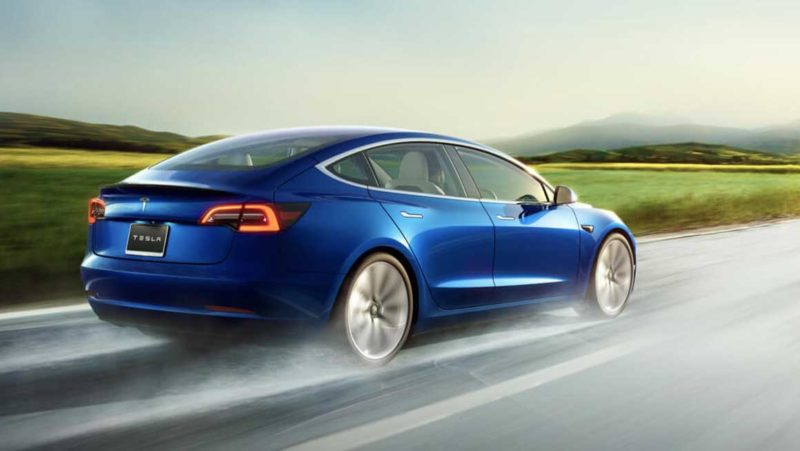High demand has gained the all-electric Tesla Model 3 top place in a list of vehicles – including internal combustion engine cars – in a new study analysing retention of value.
It’s more or less assumed by anyone buying a new car that as soon as it is driven off the lot you can immediately kiss a few thousand dollars goodbye in depreciated value.
For that reason it’s worth paying attention to factors like resale value when buying a new car, or whether you’ll get better value for money by buying new in the first place.
This is the premise of a new study from Iseecars, in which new and used sales data from 6 million vehicles in the US were used to compare the new cost of cars against their resale value one year on.
It’s an important metric to consider when looking at total cost of ownership, along with reduced “fuel” costs, and lower maintenance. Tesla CEO Elon Musk, of course, has suggested that Tesla cars will increase in value, particularly those with Full Self Driving, because of the potential revenue opportunities of “robo-taxis.”
While the average car loses 10% value within the first month of ownership and 20% within the first 12 months according to Carfax, the Model 3 lost just a fraction of its value – a quarter of that of the average car in fact – within the first twelve months.
In the study, the Tesla Model 3 came out on top by a margin of almost 6%, ahead of utility truck favourite Ford Range, the Chevrolet Traverse and the popular Honda Civic hatchback.
Worth just 5.5% less, or $US2,529 ($A3,780) based on a vehicle costing just under $US46,000 ($A68,769 converted) after a year of ownership, the high resale value of the Model 3 ranks it a better buy on value alone than other high value holders.

iSeeCars CEO Phong Ly says that the unprecedented demand for the Model 3 – for which Californian electric car maker Tesla received 325,000 pre-orders in its first week – has helped drive up resale value of the vehicle.
“The Tesla Model 3 had the highest number of preorders of any car ever produced, and its backlog of orders helped further drive the high demand for the vehicle,” says Ly.
Tesla struggled at first to supply that massive backlog of pre-orders, but although it has since reached its output capacity goal, Ly says that because people are so happy with their Model 3s there are also not many on the secondhand market – and hence those that do sell can ask a high price.
“The vehicle didn’t meet its production goals until July of 2018, and because it’s so new to the marketplace and because of high owner satisfaction there is a low inventory of used versions,” said Ly.
According to the Ly, this also means it could be a better choice to buy a new Model 3 than buying secondhand.
“Instead of buying a car that’s already been driven for one year, consumers can buy the new version of select vehicles with a purchase price of just a few thousand dollars more to avoid the uncertainties that come with purchasing a used vehicle,” said iSeeCars CEO Phong Ly in a statement.
“When spread out over the length of the average car loan at 5.5 years, the slightly higher monthly payment can be offset by the car warranty and dealer incentives such as rebates.”

Bridie Schmidt is associate editor for The Driven, sister site of Renew Economy. She has been writing about electric vehicles since 2018, and has a keen interest in the role that zero-emissions transport has to play in sustainability. She has participated in podcasts such as Download This Show with Marc Fennell and Shirtloads of Science with Karl Kruszelnicki and is co-organiser of the Northern Rivers Electric Vehicle Forum. Bridie also owns a Tesla Model Y and has it available for hire on evee.com.au.

